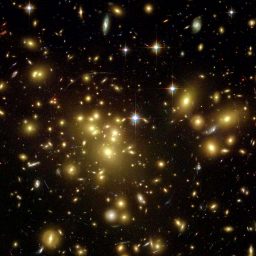Coffee talks
Thursday 02/11/2023 @ 14:30, Sala riunioni quarto piano + online (meet.google.com/sue-bwvk-axf)
Keegan Trehaeven (Rhodes University, South Africa), "Unveiling large scale structure formation in the nearby Universe. The spectacular case of the Shapley Concentration. And more..."
In the current paradigam of large scale structure (LSS) formation, galaxy clusters form at the nodes of the Cosmic Web. The majority of their baryonic mass is contained within the ICM, which can be used to trace the dynamics of these highly dense environments. The Shapley Supercluster (z ~ 0.048) has one of the most extensive collections of galaxy clusters in the local Universe. At its heart lies the Shapley Supercluster Core (SSC), spanning ~4deg^2 on the sky and consisting of many clusters and groups at various evolutionary stages of merger activity. The SSC is thus a unique test bed to study mass assembly history and the complex kinematics of LSS formation in the Universe. It contains an extremely faint ~ 1 Mpc inter-cluster radio bridge (diffuse synchrotron emission that connects pairs of gravitationally interacting galaxy clusters) and many other intriguing non-thermal diffuse sources that can be used to probe the region’s dynamics. I present a preliminary spectral index map of the bridge region between uGMRT Band-3 and MeerKAT L-band, which has a flatter spectrum than expected and suggests very mild ongoing in-situ particle (re)-acceleration. However, this map is limited by the uGMRT sensitivity. Detailing and tracing the merger history of the SSC with robust spectral index and ageing maps requires ultra-deep continuum images of uniform sensitivity across the entire complex. Hence, in preparation for upcoming MeerKAT UHF-band observations, we demonstrate using DDFacet and other radio interferometric data reduction software, visibility-plane primary-beam-corrected continuum mosaicing up to and including direction-dependent calibration. Using this technique with the MeerKAT UHF- and L-band data, we aim to draw a clear and detailed picture of the SSC merger history. I will also describe a very interesting side project that I hope to apply to Shapely in the near future.

